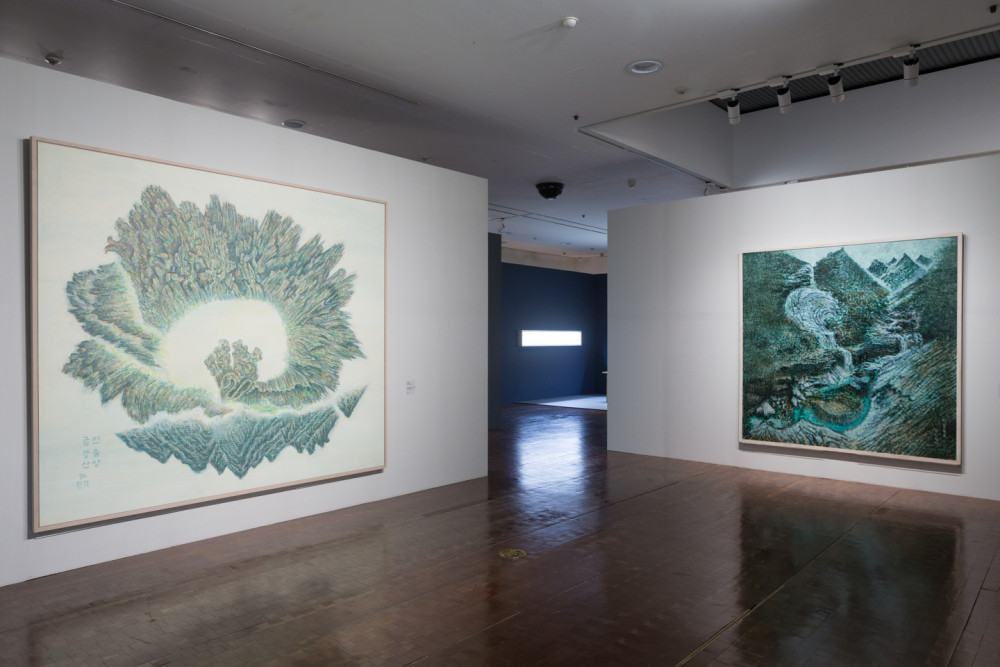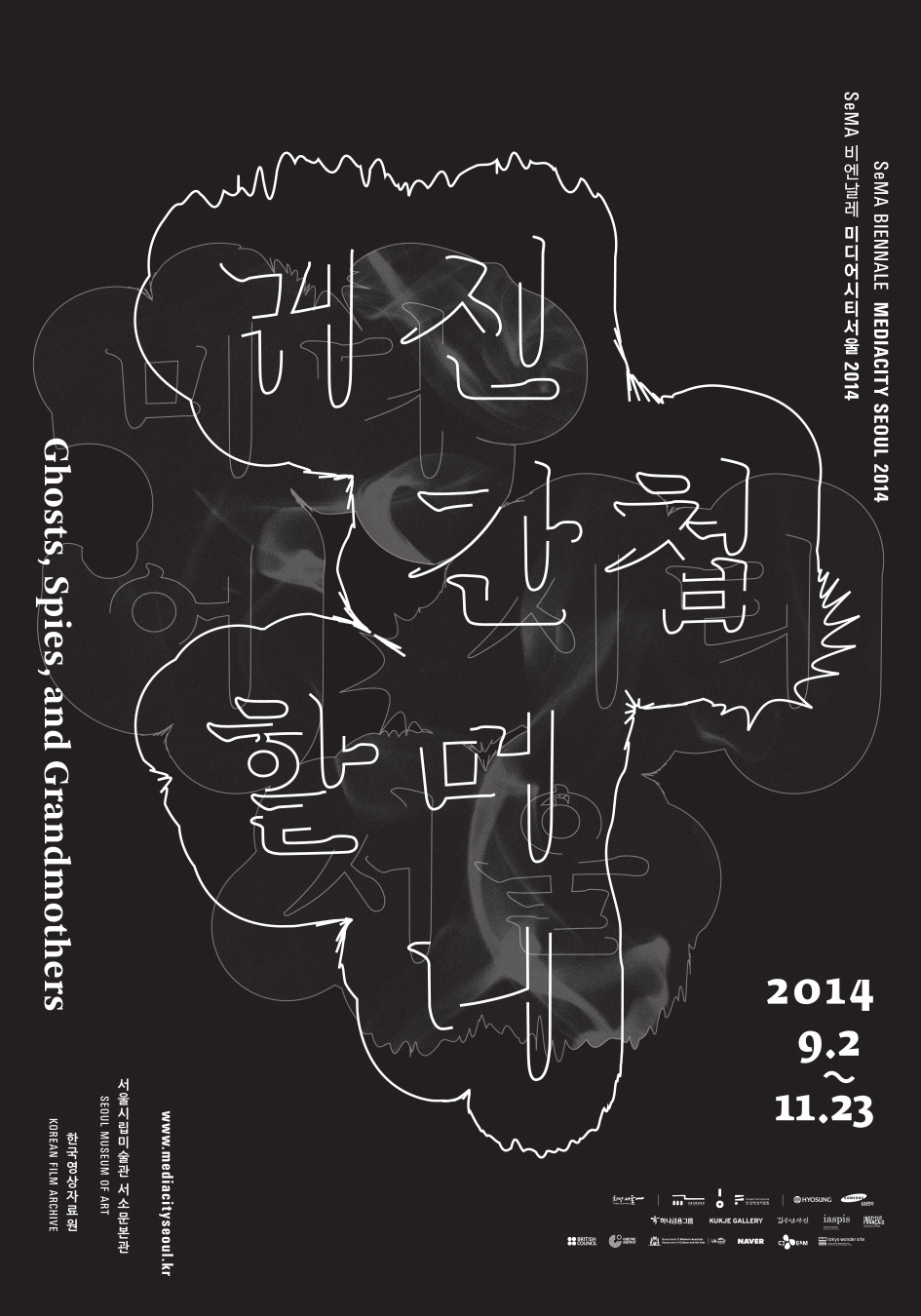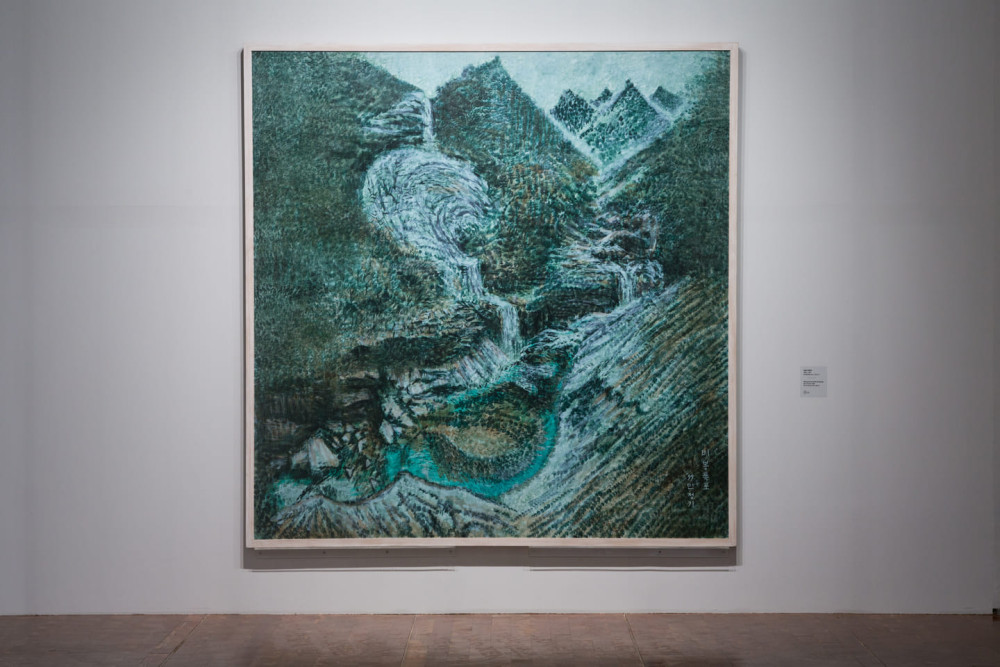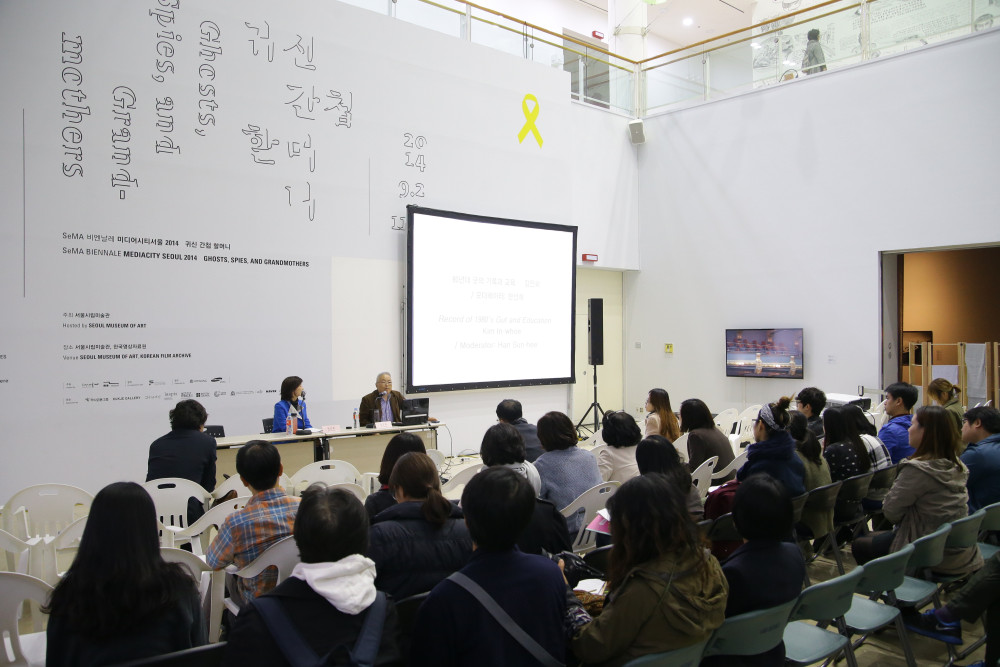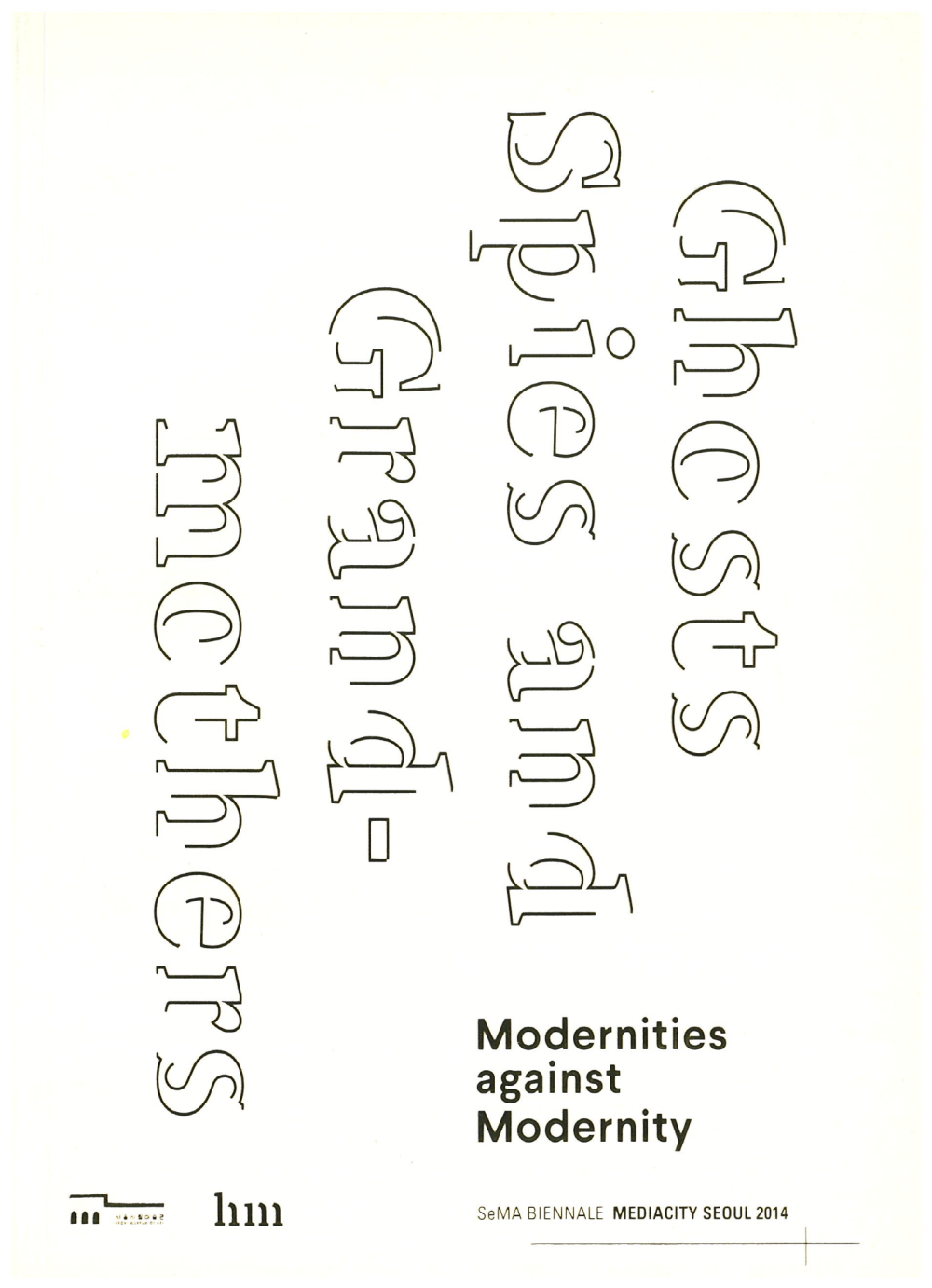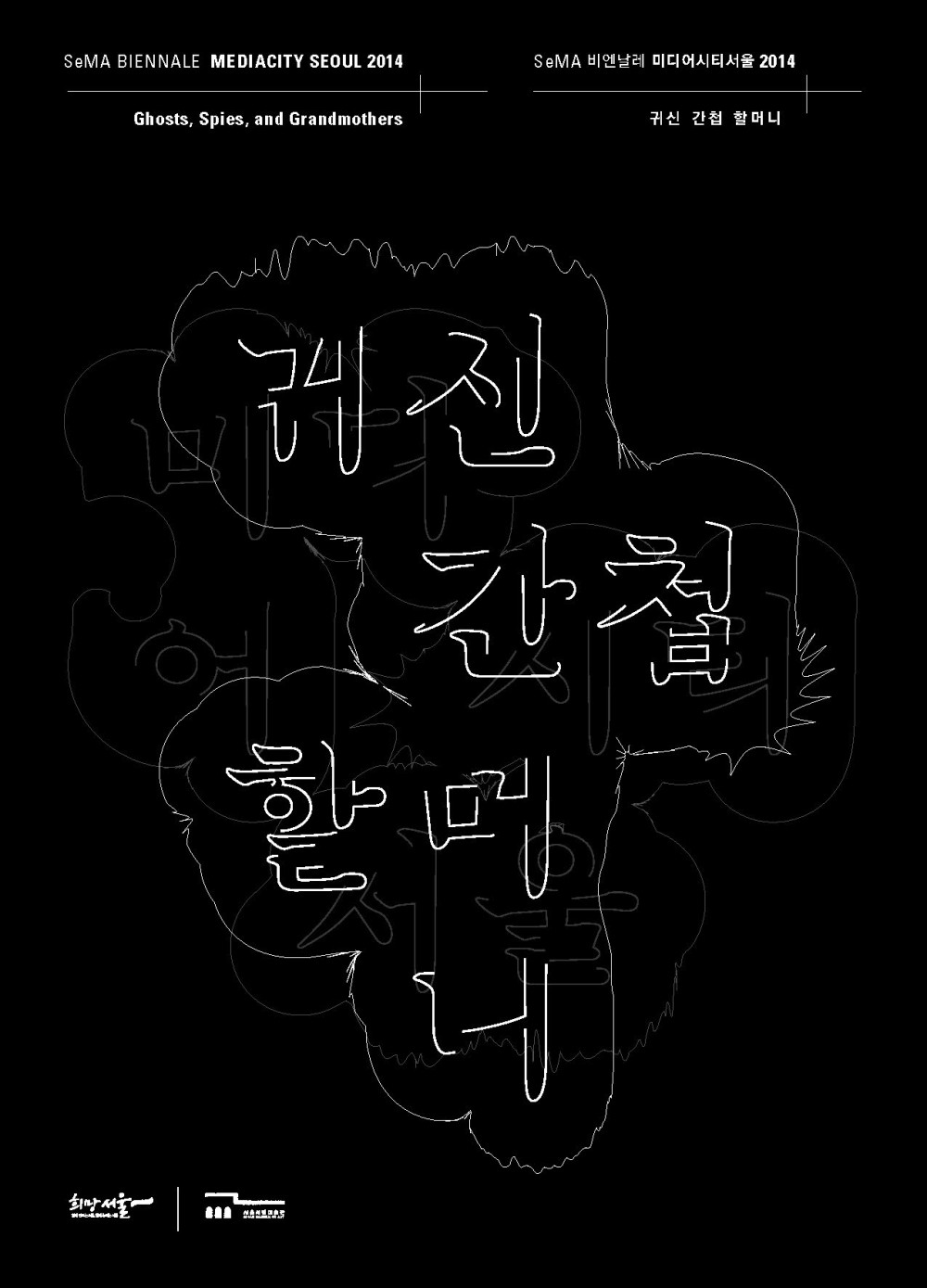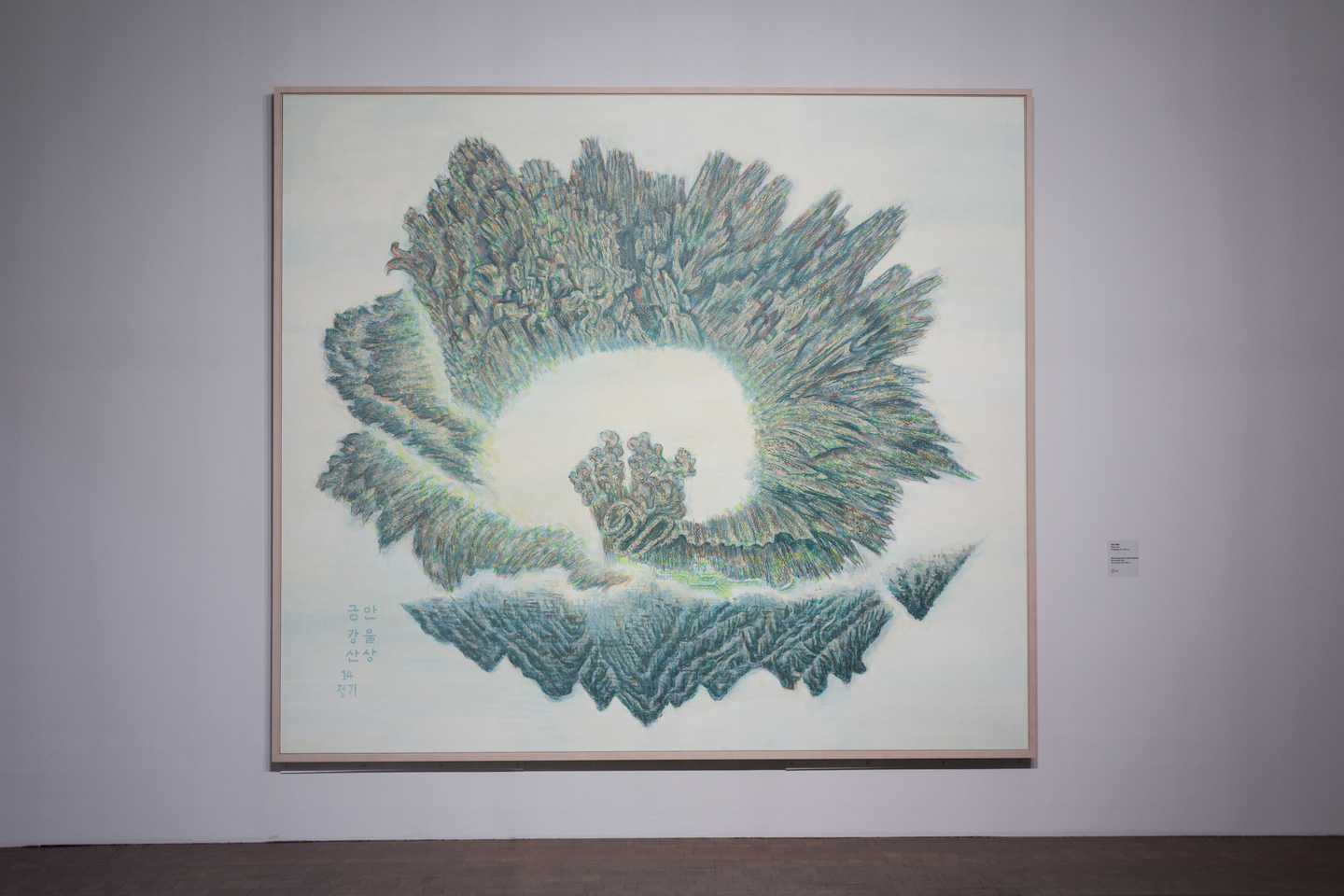
When one sees a true-view landscape† painting, it feels as if he or she is visually immersed in the painting, walking around within the painting. Kyumjae Jeong Seon (1676-1759)’s Geumgang jeondo (1734) shows a whole pictureof Nae Geumgang, the west side of the Mount Geumgang where countless mountain peaks stand around Birobong Peak and streams flow among them. Jeong Seon’s painting gives a whole picture of the mountain, seen from the top of Misiryung Ridge. The landscape can be seen in Naegeumgang, but South Koreans can only visit the Oigeumgang side of the mountain.‡ I climbed the Manmulsang Rocks in Oigeumgang and createdan image depicting the landscape surrounded by the countless sharp rocky mountains. I did not draw a long, horizontal composition but made a circular one where the mountains surroundme. The bottom part of the painting depicts along and distant passage that I took to climb the Manmulsang Rocks. [Min Joung-Ki]
† True-view landscape is a style of painting independently developed by the 17th and 18th century Joseon artists including Jeong Seon. The style is classified as a different style than the Chinese style of painting the ideal landscape. Geumgang jeondo and Inwang jesaekdo are considered representative works of the true-view lanscape. [Editor]
‡ Mount Geumgang is located in North Korea. The development of the mountain as a tourism region in 1998 enabled limited visits to the price by South Korean citizens. After a South Korean tourist was shot dead during her visit to the mountain, the tourism program has been suspended.

